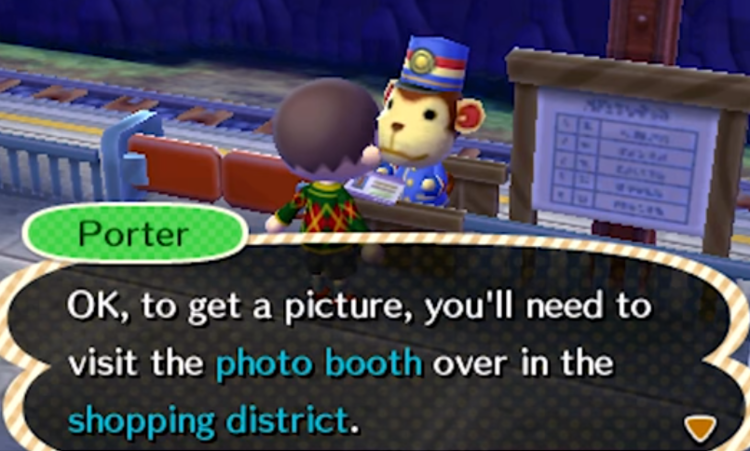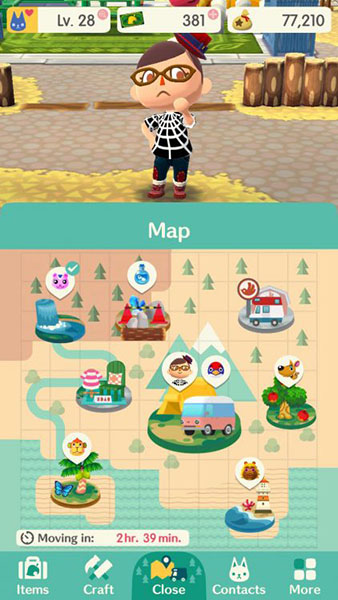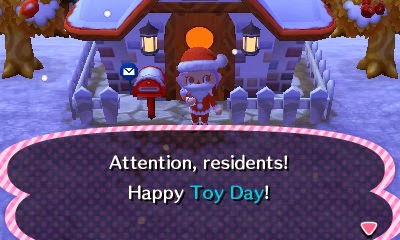
Make sure to sign up to the weekly Deconstructor of Fun newsletter!
Nintendo recently launched their third mobile game, Animal Crossing: Pocket Camp. Whilst not as heavy hitting an IP as Mario or Zelda, Animal Crossing has been a huge success for Nintendo over the years, having sold over 30 million copies at retail. So how does the first mobile entry stack up?
^ At over 30 million copies sold, Animal Crossing is a big franchise for Nintendo. Though some way short of the Super Mario (311m), Mario Kart (110m) and Zelda (86m) franchises, it’s comfortably ahead of the Fire Emblem (10m) and Metroid (17m) franchises in terms of sales.
Animal Crossing was a very unique game when it was first released on the Nintendo 64 back in 2001 and the franchise’s debut on mobile is very poignant. In terms of design, Animal Crossing inspired “Invest and Express” style mobile games of today such as Hay Day, Township, Farmville , etc due to its pioneering use of appointment mechanics and utilizing real life time and dates. Thus it’s a fascinating case study to see this game go full circle. How will the Animal Crossing mobile game compare to the mobile titles of today, which took core gameplay aspects from the console original and improved upon them?

The Original Animal Crossing
For it’s time, the Animal Crossing franchise was unique and introduced a previously unseen style of game on home consoles. It has been described as a social simulator and even as a “communication game" by Nintendo themselves. The game is open-ended, with players assuming the role of a new mayor in the town of Animal Crossing. The “aim” of the game, if there really is one, is to fulfill various tasks and goals, trying to make the town flourish and it’s residents happy. You move your character around a 3D world, but can do whatever you want, be it exploring, talking to the town's residents, catch fish or hunt bugs. Also unique for the game at the time was that the game utilised the console’s internal clock to observe days, weeks, months and years. This meant that there often tasks or goals that showed up at the same time as real-life events and holidays such as Independence Day, Halloween, the Harvest Festival (Thanksgiving), and Toy Day (Christmas). But more importantly than that, Animal Crossing was the first mainstream game to introduce us to timer mechanics in games.
Animal Crossing was famous for using the console’s internal clock to trigger in game tasks and events.
You would have to play the game at specific times of the day to attend activities such as fishing tournaments and early-morning fitness classes, which occurred on a regular schedule. The game also rationed out some items and content by forcing you to wait a certain amount of time. E.g. after knocking down some fruit from a tree, you’d have to wait a couple of hours before it grew back again. And this was in an era where micro-transactions did not exist, so you would have to come back later if you wanted more items, there was no shortcut around it! So in this sense, Animal Crossing was one of the first games that encouraged you to play a couple of times every day rather than playing for one huge session, making it more appealing to families, which is Nintendo’s key demographic. The game even had a currency called Bells which functioned in a sense as a soft currency for the game.
The series also introduced the concept of social mechanics years before they found home in web, Facebook and eventually mobile games. Multiple Town instances could be stored on one cart, meaning that multiple family members could maintain their own town on a single machine. This meant you were incentivized to visit nearby towns to trade items and leave messages, and you might often have a father switch on the game to find out his daughter had visited his town and left him some items. Again perfect for families who had one machine between them but who would use it at different times of the day.
What Nintendo had not predicted was that the game mechanics introduced in this game were a perfect fit for casual web and mobile games of the future. The game rewarded you for coming back many times a day rather than playing a longer session. You could play for very short periods of time if you wanted to, and you were incentivised to help other players and vice versa. So the fascination in playing the mobile version of Animal Crossing is to see if the old master can teach us any new tricks?
“Invest and Express” games as they are sometimes known as were some of the biggest hits on mobile as free-to-play took off with titles such as The Smurfs Village, Dragonvale and Tap Paradise Cove being early successes leading to The Simpsons: Tapped Out and Hay Day in more recent times. However, these days casual hit titles have become puzzle orientated, with management style games evolving into deeper mid-core style games. In fact, at the time of writing only Hay Day (Supercell) Township (Playrix) and The Sims: FreePlay (Electronic Arts) are in the top 100 grossing games and that could be considered as part of the genre. So it seems like this is a gameplay style that is fading away and it will be interesting to see if Nintendo can be the one to return it to it’s former glories.
Introducing Animal Crossing: Pocket Camp

^ The game loop for Animal Crossing: Pocket Camp is fairly simple and relies upon impatience thrugh timers to gate progression.
So step forward the newest version of Animal Crossing, this time developed exclusively for mobile devices. The core loop in the game is pretty simple to understand. You walk around the island and talk to its inhabitants, trying to get them to visit your Campsite. In order to get them to visit your campsite, you have to fetch items for them and craft items they’d like to see. Complete the list and the Animal will agree to come to your Campsite and you are rewarded with a montage of the Animal enjoying your Camp and with you leveling up and progressing. A fairly simple and easy to understand core loop that gives you the freedom to play the way you want.
^ Animal Crossing : Pocket Camp has time limited goals to reinforce core game mechanics and to encourage engagement with the title. This is a new addition compared to the console and handheld titles and follows examples from other mobile games to keep players interested and invested.
Part of the charm of the series has always been the personality traits of each animal, with some being kind and generous, and others being downright rude! You also begin to form relationships with the Animals, and in the console versions, this would result in new ones sometimes moving in or existing ones moving out. This has been removed from the mobile version, but animals do still sometimes give you gifts or ask you for some special tasks. The Animals have their own cycles as well, with them going to sleep and waking up at different times. Animal Crossing thus rewards you for playing the game at specific times of the day and you can progress faster with optimisation of knowing when and how to play.
^ You can craft a variety of items that can be placed in your campsite. This acts as the progression and sense of fulfillment piece of the game. It’s rewarding to spend time to make the campsite look just the way you want it and to see other people send you kudos for the job you’ve done.
^ After crafting furniture, you can place items in your Campsite to express your own sense of creativity and decorative sense.
In order to collect the items that each Animal wants, you have to perform various tasks such as shaking fruit from a tree, catching fish near water or catching bugs with a net. Each of these is a very simple action with a simple timing element and involves the element of chance. For example you might want to capture a squid for one of the animals, but it might only drop one every ten times you fish in the sea. However, each item usually has some rule set against it, such as locations on the map it is more likely to appear, and times that it has an increased chance to drop at.
^ Catching Fish, Collecting Fruit and hunting bugs are just some of the actions you need to complete in Animal Crossing in order to collect items and craft furniture.
Convenience and Intuition
^ Animal Crossing does a good job at allowing players to quickly move between functions that will allow them to progress without getting lost in endless menus, a good improvement on the console versions.
If you boiled down Animal Crossing to its core, it’s a management game which involves the player dealing with an ever increasing inventory and list of tasks and contacts to manage. One criticism of the console games is that this can over time start to become quite daunting and frustrating to manage. If there is one thing that the mobile version has done an especially good job on, it’s the addition of convenience features to reduce this friction for you. The map shows you which characters are where, and puts a tick next to them if you have completed their next task to help you progress. If you go to your contact book, it shows you which ones you are ready to invite, which ones you haven’t visited yet and which ones are ready to be spoken to. Once you’ve crafted all of the furniture needed to invite a new Animal to your Campsite, the game opens up a popup and gives you the option to do it immediately. On console these sort of features might make it feel too automated, but it’s perfect on mobile for short and rewarding session lengths.

^ There are various locations you can visit in the game. The animals move around every couple of hours, and the items you can find vary depending on what time of day it is.
The game also clearly takes cue from Clash Royale with a simple interface from which all core functions and information can be viewed from at any point and anywhere in the game. Overall the game is easy to play, and it’s largely intuitive what to do even if you’ve never played an Animal Crossing game before.
Social
^ Animal Crossing allows you to meet other players and visit their Campsites.
An element that mobile games have improved upon compared to the original Animal Crossing games, are their forays and experiments with social dynamics. Hay Day is one of the best games for this with it’s innovative peer-to-peer marketplace, it’s Neighborhood system and social based events and goals. Animal Crossing is ripe for very similar mechanics, but has a big issue that needs to be addressed - Nintendo’s conservative approach with allowing player to player communication in their games. Noticeable in all Nintendo products on mobile is that players cannot freely speak to one another using their platform, likely due to wanting to avoid any sort of situation with predatory behavior on the young and vulnerable that could cause huge damage to their brand. The result is a sandboxed approach where social features and elements exist, but in a safe manner that gives the feeling of working together without the possibility of direct communication.
Occasionally you’ll find other Campers in your game who you can visit and trade items with. Quite how these people are selected is a mystery, but it’s useful and makes the game feel more alive. Sadly the system isn’t as good as the marketplace system introduced by Hay Day that allows you to search for specific items or browse a variety of strangers goods to get what you want. In fact, the system is so successful that it is replicated by pretty much every mobile “invest and express” game, such as Playrix’ Township, Zynga’s Farmvilles and King’s Paradise Bay. There are currently far fewer items that you need to progress in Animal Crossing, but it would be a definite improvement to the game if added.
It’s also possible to add your real friends via either their Nintendo ID or by connecting your game to Facebook and sending requests that way. This is a somewhat unexpected move by Nintendo as it’s more open than their other games. The option is exactly front and center, but it allows a player to create their own friends list in their game using their real life social networks if they connect with them.
^ The Shovelstrike Quarry is a time-locked area, which requires the player to assemble friends or spend their leaf tickets.
There is also an area in the game called the Shovelstrike Quarry where players can dig for the rarest materials needed to make the most desirable items in the game. To enter the area, a player need to recruit 5 friends or spend some of their leaf tickets. Thus the game has a very limited mechanism for getting players to keep others invested in the game, and to have common goals to work towards.
Overall the social mechanics in the game are extremely limited for a game of this type. There are no leaderboards, alliances, chat or alliance events which are common in rival products. Currently there are no events as part of a live-operations campaign, but these were introduced to both Mario Run and Fire Emblem Heroes, so I’d expect them to arrive in due course, especially around the Christmas holiday period. Despite this lack of features, I predict that Animal Crossing will make a lot of money for Nintendo because of its brand and reputation alone. However, a lack of proven features that drive retention could be a reason why Animal Crossing trails off in January 2018, much like how Super Mario Run faded from a very strong start.
Monetisation
^ Monetisation is fairly simple in the game, with players being able to but a Hard Currency called Leaf Tickets and various packs that contain Had Currency and useful items.
Animal Crossing is about as straightforward as you can get for a free to play game in terms of monetization, using impatience as it’s key friction point to spend. Many actions in the game have an appointment timer that can be skipped by either using Hard Currency or using an item which in return can be purcha













































